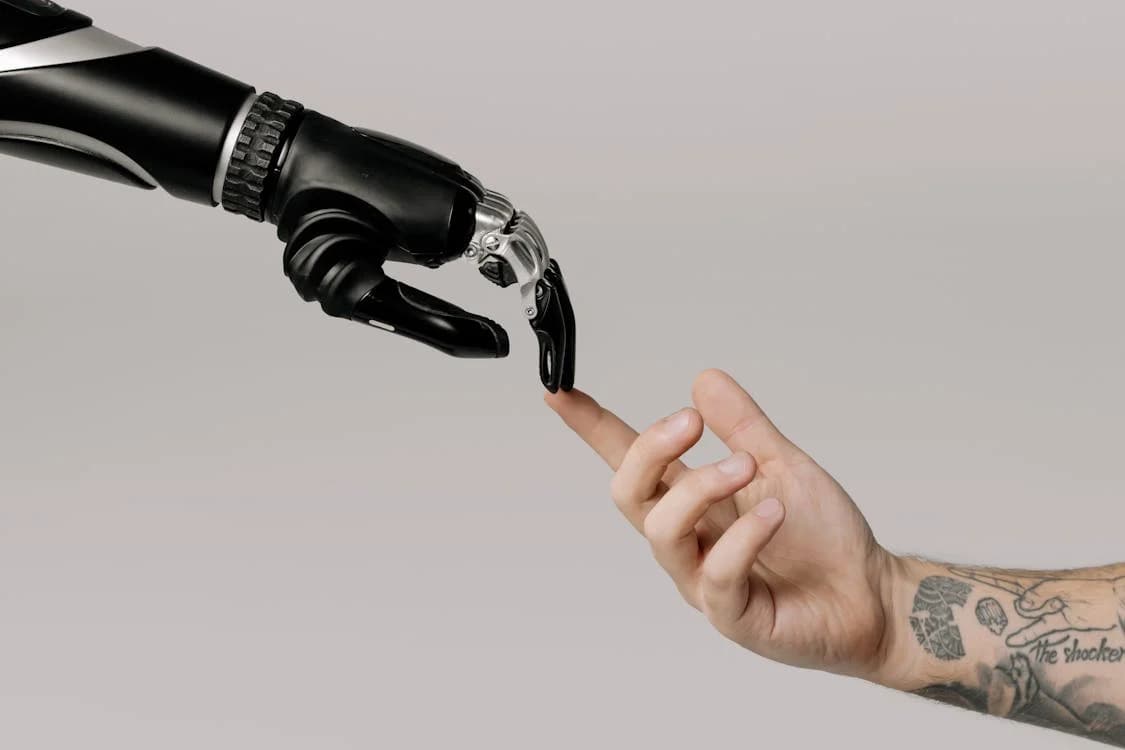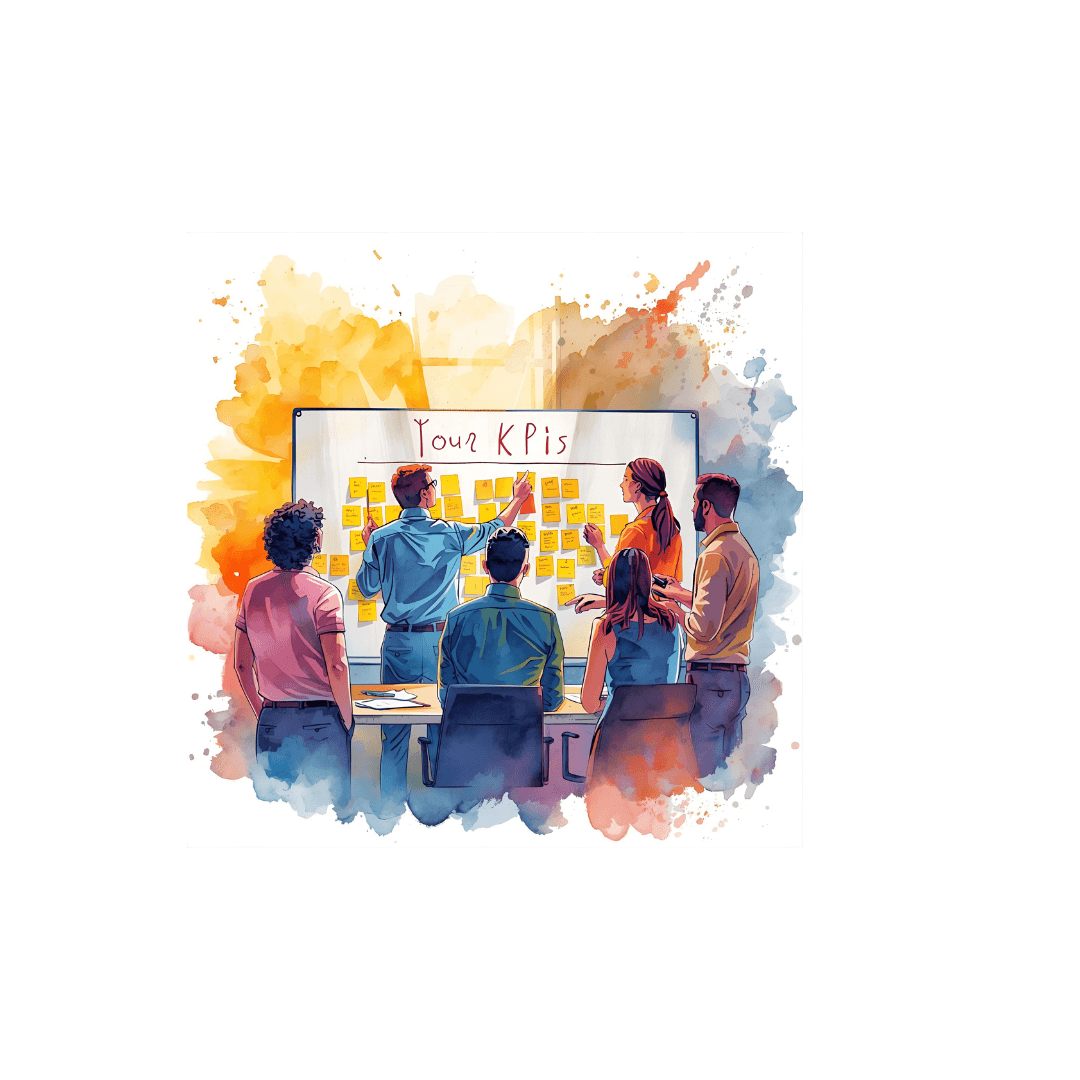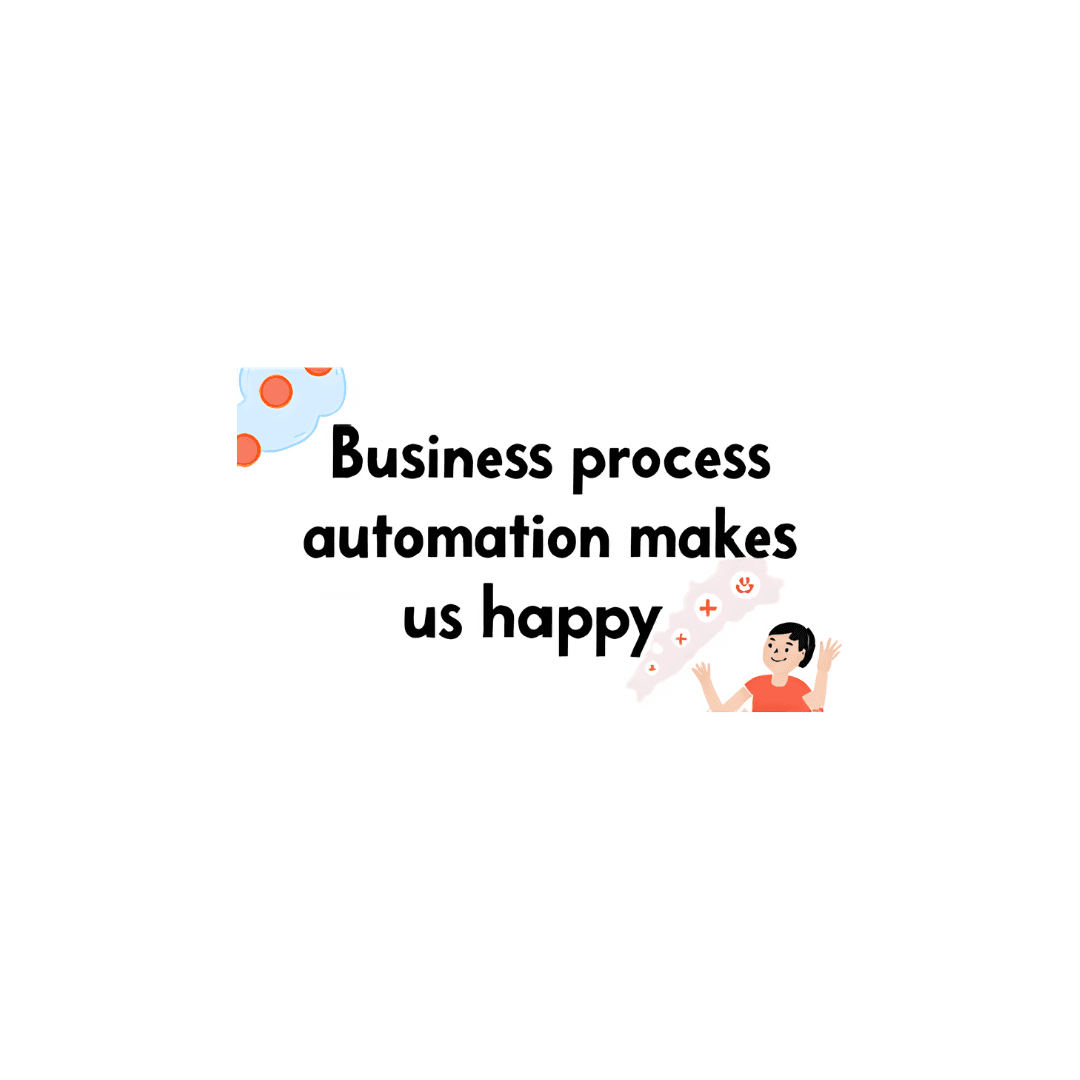Blog Post
Demystifying Artificial Intelligence (AI)
When the Prime Minister announced that AI “will drive incredible change” in the country we knew it was time to bring you on board with the benefits of this revolutionary technology.


AI Is expected to transform our lives and businesses
When the Prime Minister announced that AI “will drive incredible change” in the country we knew it was time to bring you on board with the benefits of this revolutionary technology. Keir Starmer wasted no time as the year got underway in putting his weight behind the potential of AI to “transform the lives of working people” and, he might also have added, the businesses they run.
But a news headline doesn’t tell the whole story and we believe people need to know more about what AI is and what it means for business before they can get the full benefits.
AI broadly speaking
So, let’s start with some big, broad definitions. AI falls into two different types.
Informational AI
- gain insight and intelligence to help with human decision making such as making business decisions, fraud detection, crime prevention decisions, medical diagnoses and suggested treatments
Operational AI
- to drive operational systems and replace human decision making such as in driverless cars, robotic warehouse solutions
AI can be used to combine Informational and Operational such as in the driverless car, robotic warehouses and medical operating theatres. This involves using data from historic data repositories, cameras, sensors and real time decisions
For example, in the medical world AI Operating Theatres are in development which can analyse both historic and real time patient data to identify risks and suggest best outcome approaches. AI is providing valuable insight to assist the surgeon, but he or she can still use their own experience to override the AI. The system then learns from both the surgeon’s decisions and the patient outcomes to improve diagnostics and make better recommendations in the future.
It all sounds very futuristic and there is an understandable nervousness around AI – computers taking over from humans, computers going wrong but most of us are already using it in everyday life without even realising it and may have been doing so for decades! AI has the potential to enhance our lives and make everyday business tasks easier and business efficiency is a goal most of us want to know more about.
Quality Data
At the heart of all successful AI implementations whether for data analytics or operational systems is quality data so if you’re not ready to take the leap into full AI just yet, at the very least you should be looking at getting your data AI ready.
In this article I want to talk about the way AI shows up in our everyday lives and workplace in plain English and to demystify some of the heavy tech language so you can assess whether you are ready for the AI revolution. If I reference any jargon that you are not familiar with and are uncertain of look at our AI Decoding article for some simple definitions and explanations.
What to expect
I have split the article into sections:
AI implemented well can make our lives easier, save us time and get us to diagnosis and decision making faster.
AI implemented badly can lead to misrepresentation of facts, poor decisions and make our life a little or a lot worse.
ACTION POINT
How do we ensure that we make things better with AI and not worse? AI is based on two major components: Data (the historic facts) and Algorithms (the rules decisions are based on).
Focus on the data you pass to AI tools and make sure it is fit for purpose, relevant and good quality
Focus on the rules for decision making and ensure they are implemented accurately
What is AI?
Put simply AI is your own personal assistant, researcher, case worker, analyst, writer or robot.
AI tools can trawl through masses of data looking for patterns, trends and outliers to help you make better decisions, but it can do it much faster than you and much faster than a whole team of humans.
AI is using computers to read data, analyse, ask questions, learn, find answers and make suggestions, just like a human would.
By extracting vast quantities of historic data from multiple sources AI systems can effectively be "trained" to "learn" and then "predict" or "drive" future actions and outcomes.
Can AI be trusted? The jury is out on that one! In some technology areas such as driverless cars there are stories of crashes and other missteps that some find worrying. There are also many cases where AI is fantastic, such as detecting diseases like cancer with astonishing accuracy but it will only be fantastic if you feed in quality data, design a quality decision making process (with robust rules) and iteratively validate outcomes from AI systems to fine tune the decision rules (algorithms) until what comes back is as close to 100% accurate as you need it to be.
Do you need AI to be 100% accurate? If you are using AI for sales & marketing, perhaps not, but if you are using it for life and death predictions, in medicine for example, or situations like a weather event where there is threat to life, then yes you do need 100% accuracy.
If your accuracy threshold is relatively low then you can get AI up and running fairly quickly and validate what comes back as you go to assess if the AI system has given you useful outcomes to act on, or indeed if it has presented outcomes that may not be appropriate for you.
If your accuracy thresholds are high then you will need to spend a substantial length of time working on your source data to make sure it is accurate and clean, and then an even longer period of time identifying all the decision factors, rules and algorithms that you need to build into your AI system. The development path for a high accuracy AI project will be something like;
Prepare your data - ensure you feed quality, factual, accurate data into an AI function
Define your decision and prediction rules
Design the algorithms (programming code) to implement these rules
Test & Learn
Pass test data through the algorithms
Validate predictions and outcomes
Refine your source data based on data discovery in validation stage - further cleansing, preparation, transformation
Refine algorithms based on validation outcomes - code further rules or correct rules
Pass test data through the algorithms
Validate predictions and outcomes
Refine your source data based on data discovery in validation stage - further cleansing, preparation, transformation
Refine algorithms based on validation outcomes - code further rules or correct rules
Pass test data through the algorithms
Validate predictions and outcomes
Refine your source data based on data discovery in validation stage - further cleansing, preparation, transformation
Refine algorithms based on validation outcomes - code further rules or correct rules
Testing, Validation and Refinement may take many, many iterations to get to the desired level of accuracy for your AI application. In reality, for a production system this should really continue forever.
How Is AI Made Possible?
Using programming languages and computing power. AI is developed by humans who write code to read various data sources and follow a set of instructions and rules to inspect that data and extract information of interest. Humans decide what data to use as source, humans ask the questions, humans define the decision rules, humans write the programming code to implement it. Computing power is needed to run these programmes on often very large datasets.
A powerful computer, or whole pool of computers, can read data, inspect for rule matching, and spit out results much faster than a human being can and as long as those results are 100% accurate, we can save a lot of time and act faster.
Machine Learning enables us to develop algorithms (coded rules) to forecast outcomes and predict key operational requirements.
Why Do We Need AI?
Implemented correctly AI can be significantly faster than any human! And when data and algorithms are of high quality and are thoroughly tested AI can be more consistently accurate than humans – AI doesn’t have a bad day – it is totally consistent and follows the same rules every time.
Using AI Can Give Us Answers Quicker
Data Analytics is a prime example of an area where AI can help us find answers quicker and drive business decisions in a more timely and beneficial manner
Using AI could make the difference between life and death
Medical - Computers can search medical data to identify the most likely diagnosis for a set of patient symptoms.
Humans can do this, but would have to physically read large volumes of records, reports and papers
A pool of powerful computers and well-designed AI code can process this data in seconds and offer up a diagnosis and suggested treatment
Weather - Computers can compare current weather indicators with past weather incidents and predict when there might be a risk to life.
Using AI could make the difference between profit and loss
Logistics - Choosing the most effective delivery routes considering traffic, road works, delivery address, number of stops and number of packages.
Finance Risk Management - Minimising credit risk by using AI to analyse and classify credit related data elements to derive a credit score, to assist with a client's predicted credit risk and minimise bad debts.
Customer Churn - By analysing historic customer engagement data, AI can be used to predict the likelihood of a customer leaving (churn) or staying, allowing action to be taken to retain them before they leave.
Using AI could protect us from crime
Fraud & Money Laundering - by using AI to detect unusual patterns in data and identify activities that are not normal for a client, banks and financial institutions can flag potential fraudulent or money laundering activities and protect clients from being the victims of theft and crime.
Solving & Preventing Crime - AI has many applications to assist with solving and preventing crimes such as facial recognition, analysis of historic crime data for future crime prediction, analysis of evidence data to identify patterns and links that help to solve or prevent crime.
Where Is AI Being Used?
AI is already in our lives everyday even though you may not have noticed!
Mobile phones - do you use predictive text?
Uber - do you use Uber to see when and where you can catch a cab?
Google maps - how does it finds the best of quickest route for you?
Amazon Prime video, Netflix, Now TV, Apple TV - noticed how they always offer you more series or films you might enjoy?
Spotify - you can keep yourself in playlists with no effort if you accept its suggested artists, albums or play lists
Chat bots - banks, online shopping, and more encourage us to contact them and ask questions via website chat bots
Smart thermostats and lighting systems
Security cameras
Social media - think about all those Ads for things you are interested in on Facebook, Instagram and all the friends and news posts that appear randomly in our feeds
News platforms - offering us news items we might be interested in
Search engines - have you noticed those summaries that appear at the start of your search results?
Strava - Athlete Intelligence generating summaries for our activity feeds
Online Shopping - product suggestions based on your historic browsing
Chat GPT - have you tried it yet?
Can summarise everything it finds on a topic of interest rather than having to read everything in a Google search
Use it to rewrite that email you just compiled in a more formal or more friendly style
AI is already in our working life.
All of the above
LinkedIn feature - Rewrite with AI. You type a post and LinkedIn offers to rewrite it for you
MailChimp Campaigns - MailChimp offers to generate subject and preview lines for your mail campaigns
Google search summaries - saves you wading through all the pages to scan for relevant text
Microsoft Copilot – assistance with writing, searching, creating, planning and data analysis
Reports and dashboards - looking for trends and patterns and offering you hidden insights into your business
Data Analytics - preparing, cleansing and transforming data
When AI goes wrong
There have been some amazing stories about where AI works well and also some stories about where it has not worked so well.
Take a look at these four news stories to get an idea of how things can go wrong. BBC News - Man trapped inside driverless car as it spins in circles - BBC News: https://www.bbc.co.uk/news/videos/c70e2g09ng9o
BBC News - Apple urged to withdraw 'out of control' AI news alerts - BBC News: https://www.bbc.co.uk/news/articles/cge93de21n0o BBC News - Glue pizza and eat rocks: Google AI search errors go viral: https://www.bbc.com/news/articles/cd11gzejgz4o BBC News – Energy company broke into my home: https://www.google.com/amp/s/www.bbc.co.uk/news/articles/c7912nx2n5lo.amp
Why does AI go wrong?
AI programmes follow rules and patterns defined by humans, whereas a human can question what they see and say, "that doesn't look right, I will investigate." A computer programme can only do what it is asked to do, and that is read (ingest) data and analyse it for defined patterns - if what comes back is not 100% accurate, such as a news headline rewritten in a way that misrepresents facts, AI doesn’t question it. Yes, we have machine learning that should help AI learn from historic searches and analysis, but machine learning is facilitated by human programming as well!
So, we have two major potential flaws in AI and ML
The quality of the data they have access to
The quality of the rules and patterns (algorithms) defined by programmers
Apple's response to the BBC's complaint earlier this month was:
"A software update in the coming weeks will further clarify when the text being displayed is a summarization provided by Apple Intelligence. We encourage users to report a concern if they view an unexpected notification summary."
Google said the following after responding to errors made by its AI search tool in May last year:
That it had taken action where "policy violations" were identified and was using them to refine its systems.
What can we do to maximise AI accuracy?
ACTION POINT
Start by giving AI access to quality data
Be certain that the data you pass to your AI tools is quality, truthful and trustworthy
Ensure that you define your AI rules and algorithms well
Your rules and algorithms should be carefully designed around your desired outcomes, defined interpretation tolerance levels and accuracy objectives
AI In Data Analytics
Data analytics in some form is behind every AI system whether it is informational or operational because the first stage of an AI system is to ingest, prepare, transform and analyse. But AI can actually be a part of a data analytics solution as well, assisting with processing vast pools of unstructured data and getting it ready for analysis.
One of the biggest challenges in the data analytics world is the sheer volume of data that business and organisations accumulate and how to use it effectively and fast enough to derive meaningful insights and drive business decisions. AI lends itself to data analytics given its ability to trawl through vast quantities of data looking for patterns and trends, and outliers very quickly.
Data Preparation
AI can assist not only with the ingestion (collection) of data but can also be implemented to assist with data preparation and cleansing tasks as well as identifying relationships and correlations across datasets that we might not think about as a rule.
AI can be extremely useful in extracting meaningful data from what we call unstructured data, that is; documents, social media, images, audio and chat. Generative AI can significantly speed up data ingestion processes with the use of machine learning, automating tasks that would take human beings a very long time to execute.
Correlations
Our data often holds hidden stories which could transform the way we go about our day-to-day work and help us make faster and better decisions. Hidden stories help us see the correlations between different influencers across disparate datasets, increasing our awareness, and showing us connections that help us to reshape the way we think.
If we had all the time in the world we could sift through all of our relevant data and look for patterns that might shape our future decisions, but as humans we are just too slow, and the likelihood is that when we finally draw our conclusions and form our action plan we are too late and have missed the boat.
In many cases being too slow/too late may not be critical, but often it could make a huge difference:
the difference between saving our business or losing our business by spotting sales trends or production issues earlier
succeeding or failing in a criminal investigation by linking evidence across different systems and regions
preventing or falling victim to fraud by spotting outliers (unusual behaviour) or patterns of money movement
saving or losing a life by analysing historic cases across the world to narrow down a diagnosis and treatment plan
Getting Your Data AI Ready
AI is not going away, it is here to stay, and businesses will need to learn how to embrace it in 2025 and build an AI strategy for the future.
What you have seen in this article is that fit for purpose, quality data is fundamental to all AI systems, whether for informational (BI and data analytics) or operational purposes (robotic systems). So, the first step towards a successful AI journey is to get your data AI ready. This means identifying where it is, what condition it is in, what cleansing, preparation and transformation might be required to make it a quality data source for AI. You will need to decide where this quality data will be stored, and what tools you might want to use to interrogate it.
AI can be used effectively at every step of the way in a BI (Business Intelligence) data journey, from helping with data extraction, data cleansing, data transformation, through to data mining for patterns, trends and hidden insights to help business decision making.
PTR specialise in all things data, but we also work with our clients to identify what their actual needs are, tailoring solutions to those needs and educating their teams and mentoring them to take them on the AI and data analytics journey at a pace that suits them. We can help you with your transition to the world of AI. You do not need to dive deep into AI from day 1. We can help you plan a steady path to AI ensuring that your business keeps pace with AI revolution.
Next Steps To AI
We have two offers that may be of interest to you to help you get started with your AI data journey.
We have a personalised AI Strategy Review session which you can book here
and a webinar which looks at the technology available to underpin your structured data & AI programme – called Is Fabric Right For You? This one hour session looks at Fabric, the one stop data platform from Microsoft which is itself infused with AI capabilities. Find out when the next webinar is taking place.
Share This Post
Mandy Doward
Managing Director
PTR’s owner and Managing Director is a Microsoft certified Business Intelligence (BI) Consultant, with over 35 years of experience working with data analytics and BI.
Frequently Asked Questions
Couldn’t find the answer you were looking for? Feel free to reach out to us! Our team of experts is here to help.
Contact Us


